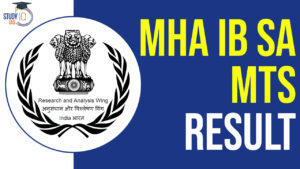Daily Current Affairs for UPSC 2023
Q) Which one of the following statements is not correct with reference to Olive Ridley Turtle?
- They are mostly found in tropical waters of Pacific Oceans.
- They are found near Rushikulya River in Odisha.
- Indian Coast Guard’s Operation Olivia aims to protect these turtles.
- They are listed as endangered in the IUCN Red List.
Daily Current Affairs for UPSC – 21 April 2023
Explanation:
- Option (1) is correct: They are the second-smallest and most abundant of all sea turtles found in the world. They are mostly found in the warm and tropical waters of Pacific and Indian Oceans, but can also be found in the warm waters of the Atlantic Ocean.
- Option (2) is correct: The Rushikulya river mouth is considered the second-biggest nesting site for Olive Ridley Turtles in India. They are known for their unique mass nesting called Arribada (which means ‘arrival by the sea’ in Spanish), where thousands of females come together on the same beach to lay eggs. They hatch in 45 to 60 days.
- Option (3) is correct: Every year, the Indian Coast Guard’s “Operation Olivia”, initiated in the early 1980s, and helps protect Olive Ridley turtles as they congregate along the Odisha coast for breeding.
- Option (4) is incorrect: Gahirmatha marine sanctuary in Odisha is considered the world’s largest nesting beach for Olive Ridleys. It is listed as Vulnerable on the IUCN Red List and under Schedule I of Indian Wildlife (Protection) Act, 1972.
Q) With reference to De-glaciation, consider the following statements:
- Deforestation is one of the prominent causes of glacial melting.
- De-glaciation in Antarctica slows down the ocean currents circulation.
- Changes in atmospheric circulation patterns and the rate of albedo can also affect glacial melting.
Which of the statements given above is/are correct?
- 1 and 2 only
- 1 and 3 only
- 2 and 3 only
- 1, 2 and 3
Explanation:
- Statement 1 is correct: Melting glaciers can be attributed to global warming caused by human activities, primarily the release of greenhouse gases such as carbon dioxide and methane from industry, transportation, and fossil fuel use. Deforestation contributes to glacial melting by releasing more carbon dioxide into the atmosphere while reducing the amount absorbed by trees. Additionally, rapid industrialization has led to glacier melting since the early 1900s. Climate change contributes to other factors that can increase glacier melt, such as changes in precipitation patterns and a decrease in snowfall.
- Statement 2 is correct: In addition, rapid glacial melt in Antarctica and Greenland influences ocean currents and slows them down, as massive amounts of very cold glacial-melt water enter warmer ocean waters. As ice on land continues to melt, sea levels will keep rising, presenting a significant threat to our planet.
- Statement 3 is correct: Natural factors such as volcanic eruptions, El Niño events, and changes in oceanic and atmospheric circulation patterns can also affect glacial melting. The albedo effect is the measure of the reflectivity of a surface, and in the case of glaciers, it plays a significant role in reflecting sunlight back into space. However, the reduction of ice cover leads to a lower albedo effect, which, in turn, leads to more absorption of sunlight and warming of the atmosphere.
Q) Consider the following statements about ‘Indian Skimmer’:
- Indian Skimmer is also found in Myanmar and Vietnam.
- It mostly inhabits the floodplains of the Ganges and Brahmaputra Rivers.
- It is listed as vulnerable on the Red List of the IUCN.
Which of the statements given above is/are correct?
- 1 only
- 1 and 2 only
- 2 and 3 only
- 1, 2 and 3
Explanation:
- Statement 1 is correct but statement 2 is incorrect: Indian Skimmer is native to India, Bangladesh Myanmar, Nepal, Pakistan and Vietnam. Indian skimmer is found in the coastal estuaries of western and eastern India. Indian Skimmers have been recorded for the first time in Satkosia wildlife sanctuary. Satkosia Gorge Wildlife Sanctuary was created in 1976, with an area of 796 km. Satkosia spreads along the magnificent gorge over the mighty river Mahanadi in Odisha.
- Statement 3 is incorrect: It is listed as Endangered on the IUCN Red List. Recent surveys estimate the population of Skimmers in Bangladesh and India at just 3,000 to 3,500 respectively.
Q) With reference to Pension System in India, consider the following statements:
- Both non-resident Indians and overseas citizens of India are eligible to join the National Pension System.
- Under the Atal Pension Yojana, upon the death of the contributor spouse, the pension corpus is returned to the central government.
- The Pension Fund Regulatory and Development Authority is a statutory body under the Ministry of Employment and Labour.
Which of the statements given above is/are not correct?
- 1 and 2 only
- 1 and 3 only
- 2 and 3 only
- 1, 2 and 3
Explanation:
- Statement 1 is incorrect: National Pension System (NPS) is implemented and regulated by Pension Fund Regulatory and Development Authority (PFRDA). National Pension System Trust (NPST) established by PFRDA is the registered owner of all assets under NPS. NPS was made available to all Citizens of India from May 2009. Any individual citizen of India (both resident and Non-resident) in the age group of 18-65 years can join NPS. However, OCI (Overseas Citizens of India) and PIO (Person of Indian Origin) card holders and Hindu Undivided Family (HUFs) are not eligible for opening of NPS accounts.
- Statement 2 is incorrect: Atal Pension Yojana is a pension plan intended mostly towards unorganized workers such as maids, gardeners, and delivery boys. The former Swavalamban Yojana, which was not well received by the public, was replaced by this scheme. Employees in the private sector or those who work for a company that does not offer a pension plan can also apply for the scheme. There is an option of getting a fixed pension of Rs 1000, Rs 2000, Rs 3000, Rs 4000, or Rs 5000 on attaining an age of 60. The pension will be determined based on the individual’s age and the contribution amount. The contributor’s spouse can claim the pension upon the contributor’s death and upon the death of both the contributor and his/her spouse, the nominee will be given the accumulated corpus.
- Statement 3 is incorrect: Pension Fund Regulatory and Development Authority is the statutory Authority established by an enactment of the Parliament, to regulate, promote and ensure orderly growth of the National Pension System (NPS). It works under the Department of Financial Services under the Ministry of Finance. PFRDA administers and regulates the National Pension System (NPS) and also administers Atal Pension Yojana. It performs the function of appointing various intermediate agencies like Pension Fund Managers, Central Record Keeping Agency (CRA) etc.
Q) Consider the following pairs:
| Disputed Area | Associated states/ Union territory | |
| 1. | Parwanoo region | Uttarakhand and Uttar Pradesh |
| 2. | Sarchu area | Himachal Pradesh and Jammu and Kashmir |
| 3. | Belagavi | Karnataka and Maharashtra |
| 4. | Lushai Hills district | Assam and Mizoram |
How many of the pairs given above is/ are correctly matched?
- Only one pair
- Only two pairs
- Only three pairs
- All four pairs
Explanation:
- Pairs 1 and 2 are incorrectly matched: Parwanoo region is a disputed area between Haryana and Himachal Pradesh. While Sarchu area is a disputed area between Himachal Pradesh and Ladakh. It is a strategic area on route between Leh and Manali
- Pair 3 is correctly matched: Belagavi, Karwar, Nipani are disputed areas between Karnataka and Maharashtra due to demarcation of state boundaries based on linguistic lines in 1956.
- Pair 4 is correctly matched: Due to British-era notifications in 1875 and 1933, the Lushai Hills district became a region of dispute between Assam and Mizoram. Due to North-Eastern Areas (Reorganisation) Act, 1971, dispute over Mikir Hills district rose between Meghalaya and Assam.


 SSC Stenographer 2024 Notification Out a...
SSC Stenographer 2024 Notification Out a...
 IB SA MTS Final Result 2024 Out at mha.g...
IB SA MTS Final Result 2024 Out at mha.g...
 Model Skill Loan Scheme, Eligibility, Re...
Model Skill Loan Scheme, Eligibility, Re...

















